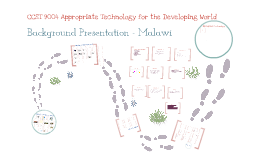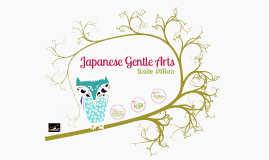Japanese Background and Information
Transcript: Japanese Origins The Japanese originated mostly from the interbreeding of the Jomon Era people from 15,000 to 500 BCE, as well as as the arrival of some Koreans and Chinese years later. Special Characteristics and Traditions Traditions: Japanese gardens are found in Japanese temples and shrines, they were inspired by the Shinto religion and the belief in an ideal state of harmony. Japanese Architecture: They were influenced deeply by their religious beliefs: Buddhism, and Shintoism. Their houses are made of wood, raised by stilts off the ground with sloped roofs made of thatch or tiles. They will also create mats out of lightweight wood or even bamboo. Japanese Cuisine: The Japanese mainly feast on rice and fish along with a side of vegetables. Other common dishes are tofu and soya bean curd. When the Japanese came to Canada they also brought some of their other unique foods such as sushi and sashimi as well as teppanyaki. Kimonos: A kimono is a full-length robe that goes from the wearer's shoulders to ankles. They are normally tied around the waist with a special sash called an Obi. They are traditionally made of silk, satin, or brocade and designed with the features of nature such as cherry blossoms, leaves, and butterflies. In modern-day Japan, they are worn mostly for ceremonies such as festivals or marriage. Although there are many other Japanese traditions, these are just a few major ones. Other traditions are; tea ceremonies, festivals(such as the Cherry-Blossom Festival), paintings, calligraphy, Sumo Wrestling, and the Ikebana(a particular flower arrangement.) A traditional Japanese kimono, designed with cherry blossoms. A Japanese Garden,commonly found in temples and shrines. Reasons For Coming to Canada Japanese immigration started in the 1870s. Most of the immigrants came to Canada, hoping to start a new, better life. At the period in time, the population density was very high. Most of the people were poor, hardly making a living off of fishing, farming, and laboring. Later on in time, around 200 volunteers came to Canada to fight alongside Canada in World War 1. Migration Information, Years, Routes, Modes Of Transportation, Experiences Years Of Migration: The first known Japanese man to immigrate to Canada was Manzo Nagano in 1877. After that, during World War 1,(1916-1917 specifically), more than 200 Japanese volunteers came to Canada and tried to join our army to prove their loyalty to Canada. Almost a century later from when Manzo Nagano arrived in Canada, a new wave of Japanese arrived in Canada. Most of them were well-educated and came from industrialized cities. Migration Routes:Japanese mass migration first occurred in 1868. They headed to Hawaii before spreading out to other countries such as Canada. Modes of Transportation: When the first Japanese people immigrated to Canada, there wasn't such thing as planes so they got to Canada by boat, crossing the Pacific Ocean. Contributions To Canada Japan has done a great debt to Canada. In 1916, a group of 200 Japanese volunteers arrived on Canada's shore to help them in World War 1. In fact, if you go to Vancouver's Stanley Park, there is a monument built in honor of the fallen Japanese men from WW1 who sacrificed their lives for our country. On a different note, Japan is also one of our biggest trade partners. They export all sorts of things to us such as coal and cars. Some of their smaller contributions to Canada are:martial arts, flower arrangements(Ikebana), manga and taiko drumming. Overall, Japan has contributed to Canada's cultural, political, economic and public life. Changes To Japan's Culture As time passed from when the Japanese arrived in Canada, their culture also changed as well. They became more civilized, and eventually the age of the samurai died out. The kimonos which were once worn on a daily basic now where only worn for special ceremonies as well. Arigato! Japanese Background and Information Stanley Park's monument in Vancouver BC, dedicated the fallen Japanese men in WW1.

















